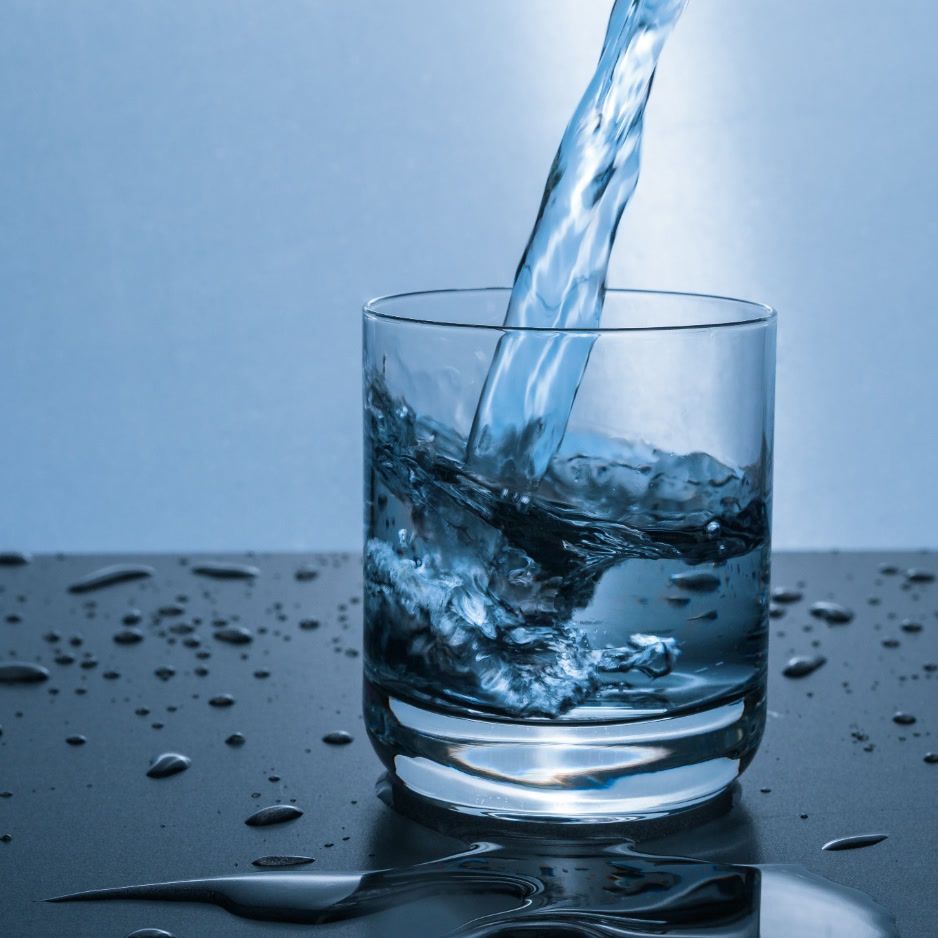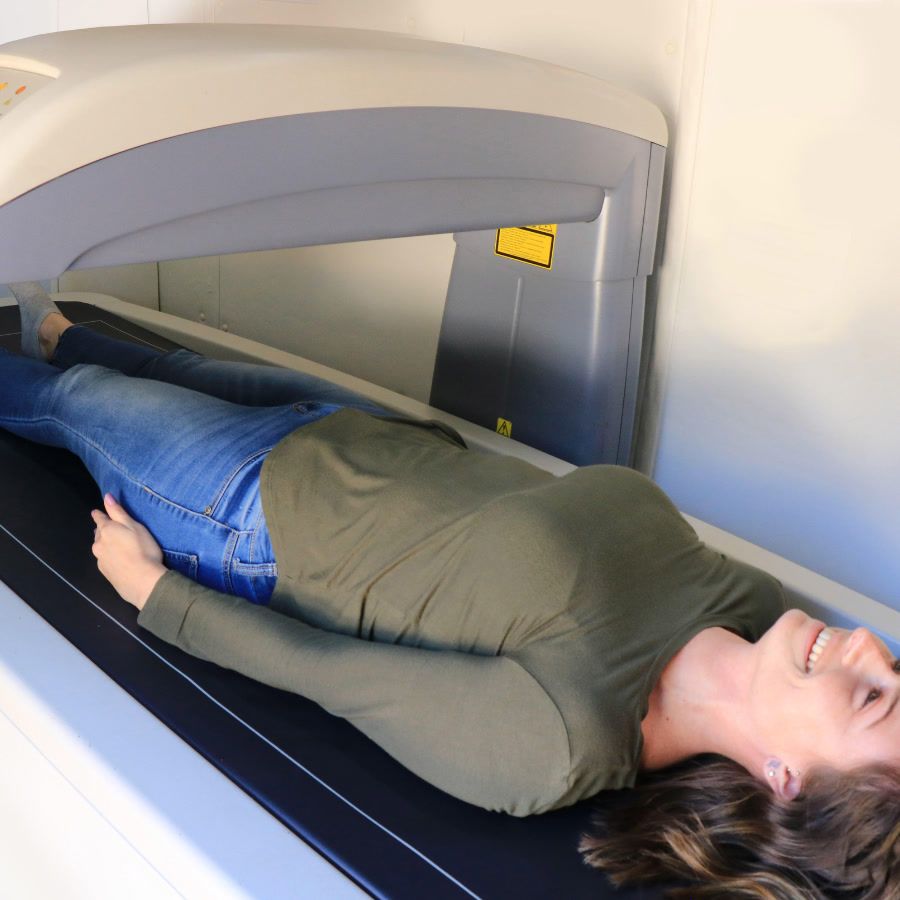8% Body Fat Male: Appearance, Health, Measurement & Plan
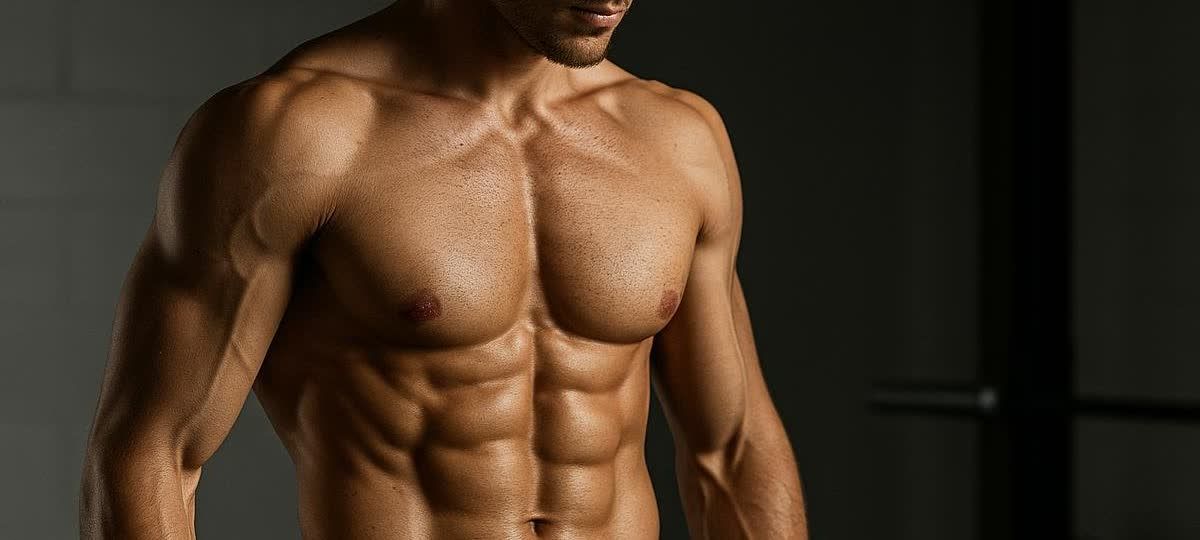
8% Body Fat Male: Look, Health, Measurement & Plan
Want razor-sharp abs that still power you through heavy lifts? Online searches for "8 body fat male" often yield more hype than substance. For many men, the path to carved-out abs means reaching – and keeping – roughly 8% body fat. Yet the web is stacked with vague charts, inconsistent photos, and one-size-fits-all workout plans. This deep-dive provides a science-backed roadmap covering:
- What 8% body fat actually looks like on different male physiques
- Exactly how to measure it (DEXA, calipers, Navy tape, and more)
- The health pros, cons, and hormone considerations of single-digit leanness
- An actionable nutrition + training plan to arrive at 8% without sacrificing muscle or sanity
Disclaimer: The information below is for educational purposes only and not a substitute for professional medical advice.
Quick Facts at a Glance
| Metric | 8% Body Fat Benchmark |
|---|---|
| BMI Equivalent* | ~20–23 (depends on muscle mass) |
| Waist-to-Height Ratio | Target ≤ 0.44 (general health cut-off is 0.5 per the UK National Institute for Health and Care Excellence [NICE], 2022) |
| Visible Abs? | Yes – full six-pack definition |
| Hormonal Impact | Research in male physique athletes shows testosterone can dip during prolonged low-calorie, low-fat phases (Springer, 2024) |
| ACE Category | Athletes (6–13%) |
*BMI assumes average height (5′10″) & moderate muscle mass. Muscle-dense athletes may be heavier for the same BF%.
1. What Does 8% Body Fat Look Like?
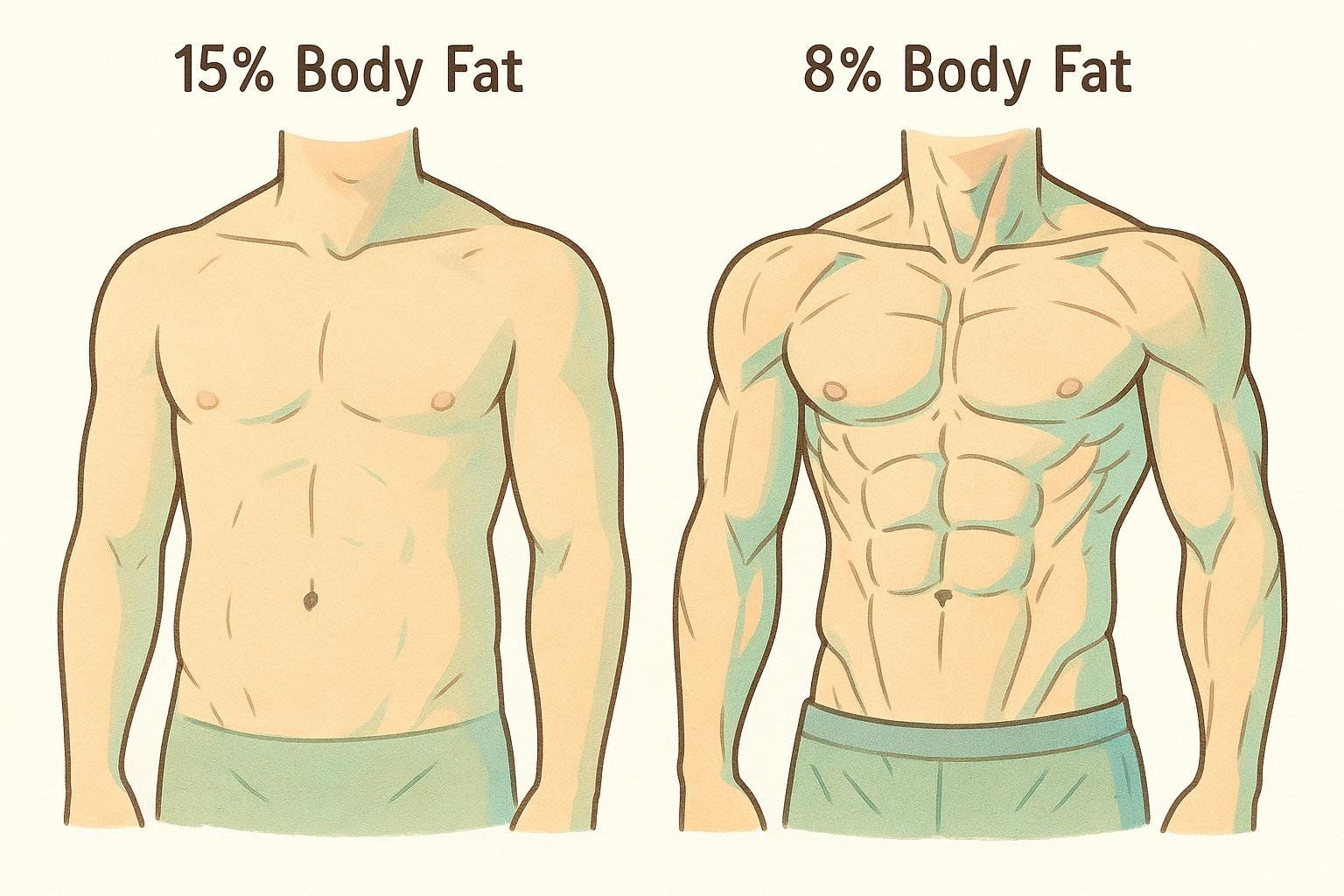
At 8% body fat, subcutaneous and visceral fat stores are minimal. Oblique lines sharpen, abdominal veins become visible, and the last hint of love-handles usually disappears. The exact look depends on how much muscle sits underneath the skin. Below are illustrative examples—not rigid categories—of how different physiques might present at 8%:
Example A: Moderate Muscle Mass (≈ 170–190 lb at 5′10″)
- Deep abdominal grooves and clear serratus lines
- Shoulder-to-waist taper is striking
- Lower-back “Christmas tree” definition shows during flexion
Example B: Lower Muscle Mass (≈ 140–155 lb at 5′10″)
- Prominent veins in forearms, sometimes in quads
- Less chest fullness if muscle mass is limited
- May appear “stringy” without strategic hypertrophy work
Example C: Higher Muscle Mass (≈ 190–215 lb at 5′10″)
- Stage-ready six-pack even when relaxed
- Striations in delts, triceps, and sometimes glutes
- Vascular roadmap across arms and upper chest
2. Is 8% Body Fat Healthy & Sustainable?
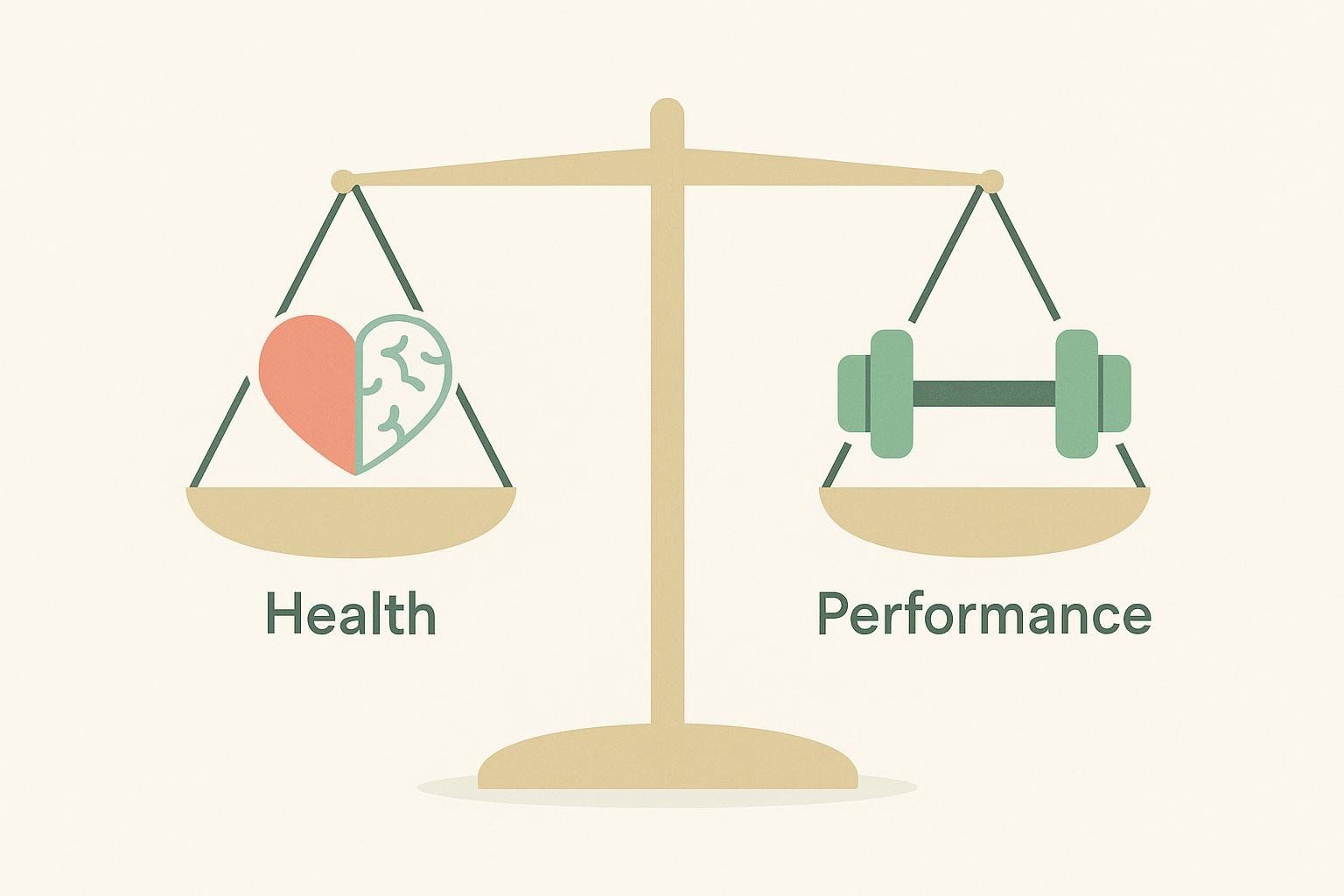
The Upside
- Improved insulin sensitivity – Less visceral fat means better glucose control (Diabetes Care).
- Clearer metabolic markers – Lower triglycerides and improved HDL often accompany leanness.
- Athletic advantage – Higher strength-to-weight ratio for gymnastics, rock climbing, and combat sports.
The Cautions
- Hormonal strain: A longitudinal study of male physique competitors reported significant drops in total and free testosterone during prep diets (Springer, 2024).
- Thyroid slowdown: Long-term calorie restriction has been shown to lower circulating T3 levels, reducing resting energy expenditure (J Clin Endocrinol Metab, 2006).
- Energy & mood: Irritability, poor sleep, and cognitive fatigue are common if you under-fuel.
Age Matters
- 20s–30s: Typically tolerate 8% well if protein and micronutrients are adequate.
- 40s–50s: Greater risk of decreased testosterone and bone mineral density. Regular DEXA scans help ensure lean mass and bone health aren’t compromised.
3. Measuring 8% Body Fat: Accuracy Hierarchy
| Method | ± Error Margin | Best For | BodySpec Pro Tip |
|---|---|---|---|
| DEXA Scan | ± 1–2% | Gold-standard, regional fat & visceral fat score | Confirm fat loss vs. muscle loss every 8–12 weeks. |
| Hydrostatic Weighing | ± 2–3% | Research labs | Not practical for monthly tracking. Read our guide on hydrostatic weighing. |
| InBody / BIA | ± 3–5% | Quick gym check-ins | Hydration swings can skew results. See DEXA vs. InBody comparison. |
| Skinfold Calipers | ± 3–5% (skilled tester) | Budget option | Use 7-site Jackson-Pollock formula weekly; always at the same time of day. |
| Navy Tape | ± 4–6% | At-home estimate | Tape just above the navel, relaxed. Repeat three times for consistency. |
Why DEXA Dominates
A DEXA scan doesn’t just spit out one number. You’ll see:
- Regional fat map (e.g., android vs. gynoid)
- Visceral fat grams – critical at very low BF levels
- Lean mass balance so you know if your cut is costing muscle
4. Blueprint to Reach 8% Without Losing Muscle
A. Set a Realistic Timeline
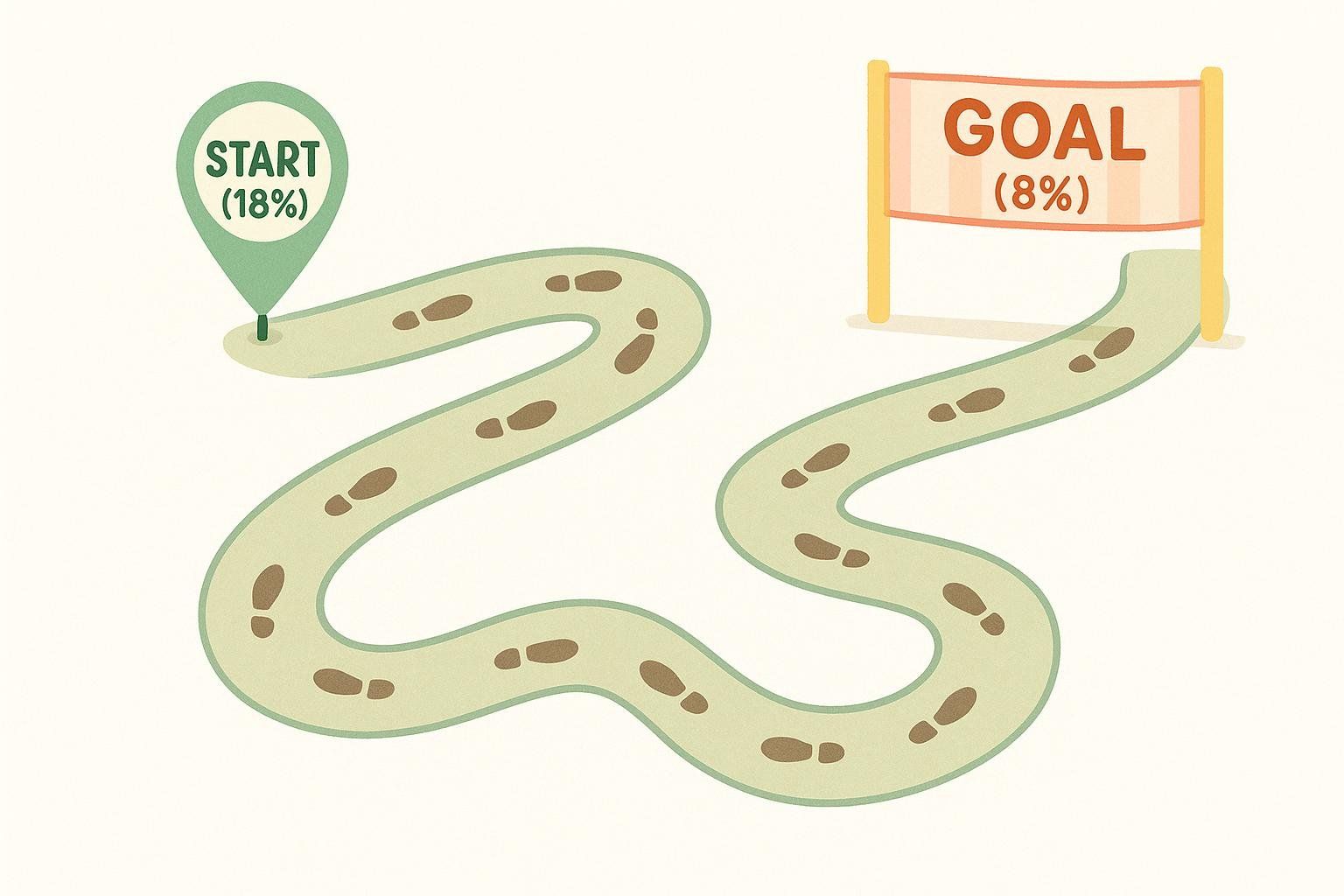
Rule of thumb: Lose 0.5–1.0% of body weight per week. Faster cuts spike cortisol and cannibalize muscle (ISSN Position Stand).
| Starting BF% | Weekly Fat-Loss Target | Approx. Weeks to Hit 8% |
|---|---|---|
| 18% | 0.7–1.0 lb | 10–14 |
| 15% | 0.6–0.8 lb | 6–10 |
| 12% | 0.5–0.7 lb | 4–6 |
B. Nutrition Framework
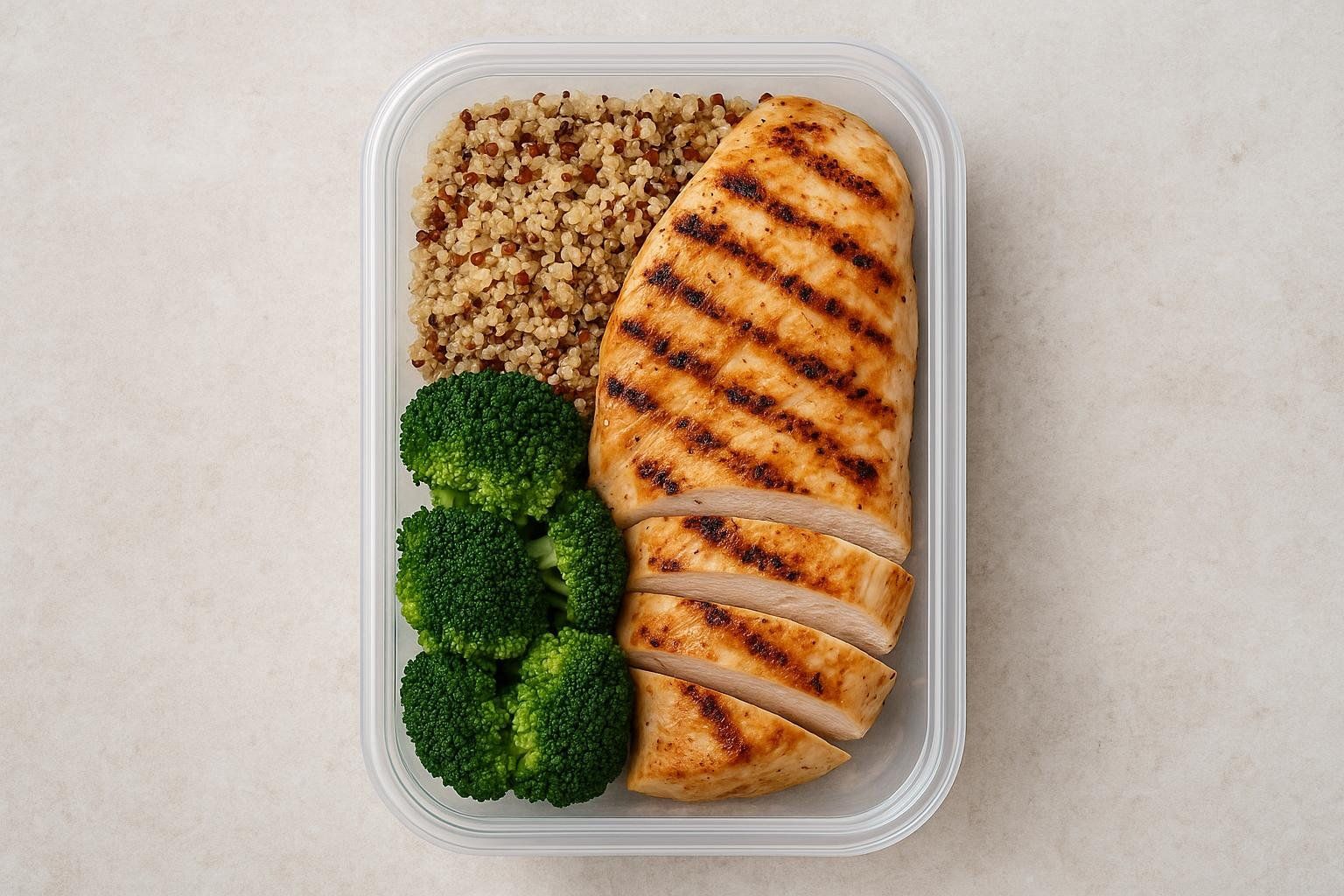
- Protein: 1.0–1.2 g per pound of goal body weight.
- Calorie deficit: 20–25% below maintenance.
- Carb cycling: Place 60–70% of daily carbs around workouts for performance & recovery.
- Micronutrient density: Leafy greens, berries, citrus, iodized salt, and fatty fish support thyroid & testosterone.
Not sure of maintenance calories? Start with our BMR Calculator to estimate basal metabolic rate, then multiply that number by an activity factor (1.3–1.6) to get a ballpark Total Daily Energy Expenditure.
C. Training Split (7-Day Week, 5 Workouts)

| Day | Focus | Key Lifts |
|---|---|---|
| 1 | Upper Strength | Bench Press 5×5, Weighted Pull-ups 4×6 |
| 2 | Lower Strength + HIIT | Squat 5×5, Romanian Deadlift 3×6, 10×30-sec bike sprints |
| 3 | Rest / Mobility | Foam roll + 30-min brisk walk |
| 4 | Push Hypertrophy | Incline DB Press 4×8, Dips 3×AMRAP (As Many Reps As Possible) |
| 5 | Pull & Core | Deadlift 4×5, T-bar Row 4×8, Hanging Leg Raise 4×12 |
| 6 | Conditioning | 20-min sled pushes + 15-min rower |
| 7 | Rest |
Need a fool-proof recomposition plan? Dive into our fat-loss-without-muscle-loss guide.
D. Recovery & Lifestyle

- Sleep 7–9 hours – sleeping fewer than six hours has been shown to lower leptin and raise ghrelin by up to 28%, increasing hunger (University of Chicago, 2004).
- Stress management – A 2020 meta-analysis in International Journal of Sport and Exercise Psychology confirmed that mindfulness practices can significantly reduce cortisol levels (International Journal of Sport and Exercise Psychology, 2020).
- Lean bulk slowly: Add 75–100 calories weekly for 4–6 weeks post-cut to avoid rebound fat gain.
- Periodic diet breaks (1 week at maintenance every 6–8 weeks) maintain leptin and prevent plateaus.
5. Maintaining 8%: The Tougher Battle
Staying there is harder than getting there. Strategies:
- Keep protein high (0.9–1.0 g/lb) and fiber ≥ 25 g.
- Plan mini-bulks (2–3% body-weight gain) to restore hormones and build muscle, then mini-cuts back to 8–10%.
- Scan quarterly – Interpreting DEXA results can reveal muscle loss before the mirror does.
6. FAQs
How low can visceral fat go? Analysis from BodySpec's dataset of over 2 million DEXA scans indicates that men at 8% body fat typically carry <0.5 lb (≈225 g) of visceral fat. Our visceral fat level chart classifies anything under 1 lb (≈454 g) as “excellent.”
Do I need supplements? Not required, but whey isolate, creatine, and vitamin D3 have strong evidence for preserving lean mass.
Why does my weight stall after 2 weeks? Adaptive thermogenesis lowers your daily burn. Re-calculate maintenance or add increasing your daily steps to boost NEAT (Non-Exercise Activity Thermogenesis).
Key Takeaways
- 8% body fat delivers stage-ready aesthetics but demands precision.
- DEXA is the only consumer-available tool that confirms visceral fat is truly low while lean mass stays intact.
- Sustainable single-digit leanness hinges on controlled deficits, strategic re-feeds, and diligent recovery.
Ready to verify where you stand? Book a BodySpec DEXA scan and get data-driven feedback your mirror can’t show.
